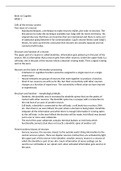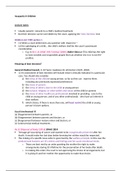College aantekeningen
College aantekeningen Brein & Cognitie 1 (SOW-PSB1BC06N) An Introduction to Brain and Behavior, ISBN: 9781319243562
- Instelling
- Radboud Universiteit Nijmegen (RU)
Dit zijn mijn hoorcollege aantekeningen van het vak Brein & Cognitie 1. Dit was van het college jaar 2020/2021. Er is een mix van Engelse en Nederlandse aantekeningen, dit lag aan de docent die het die week gaf. De aantekeningen zijn van alle colleges.
[Meer zien]






